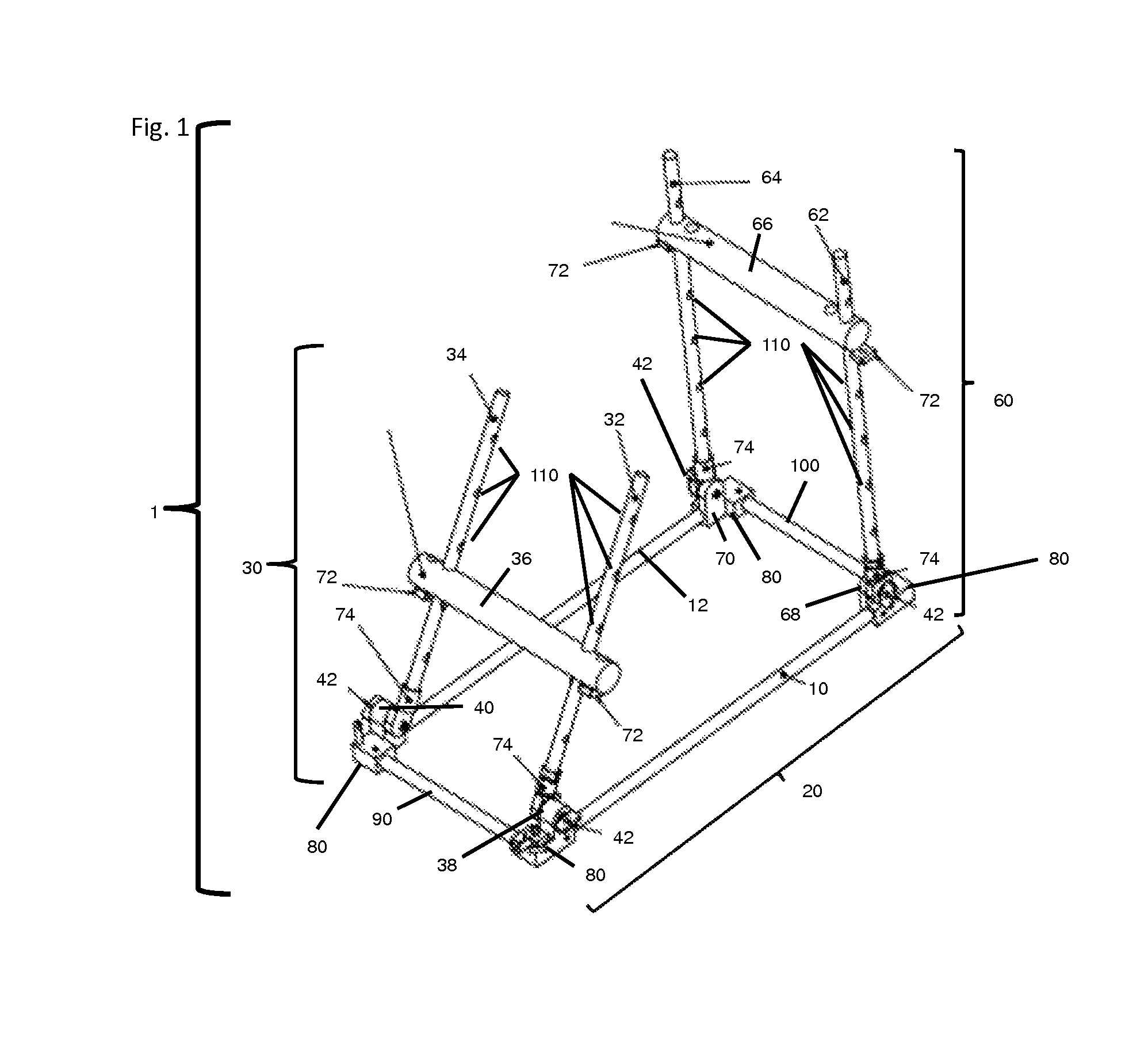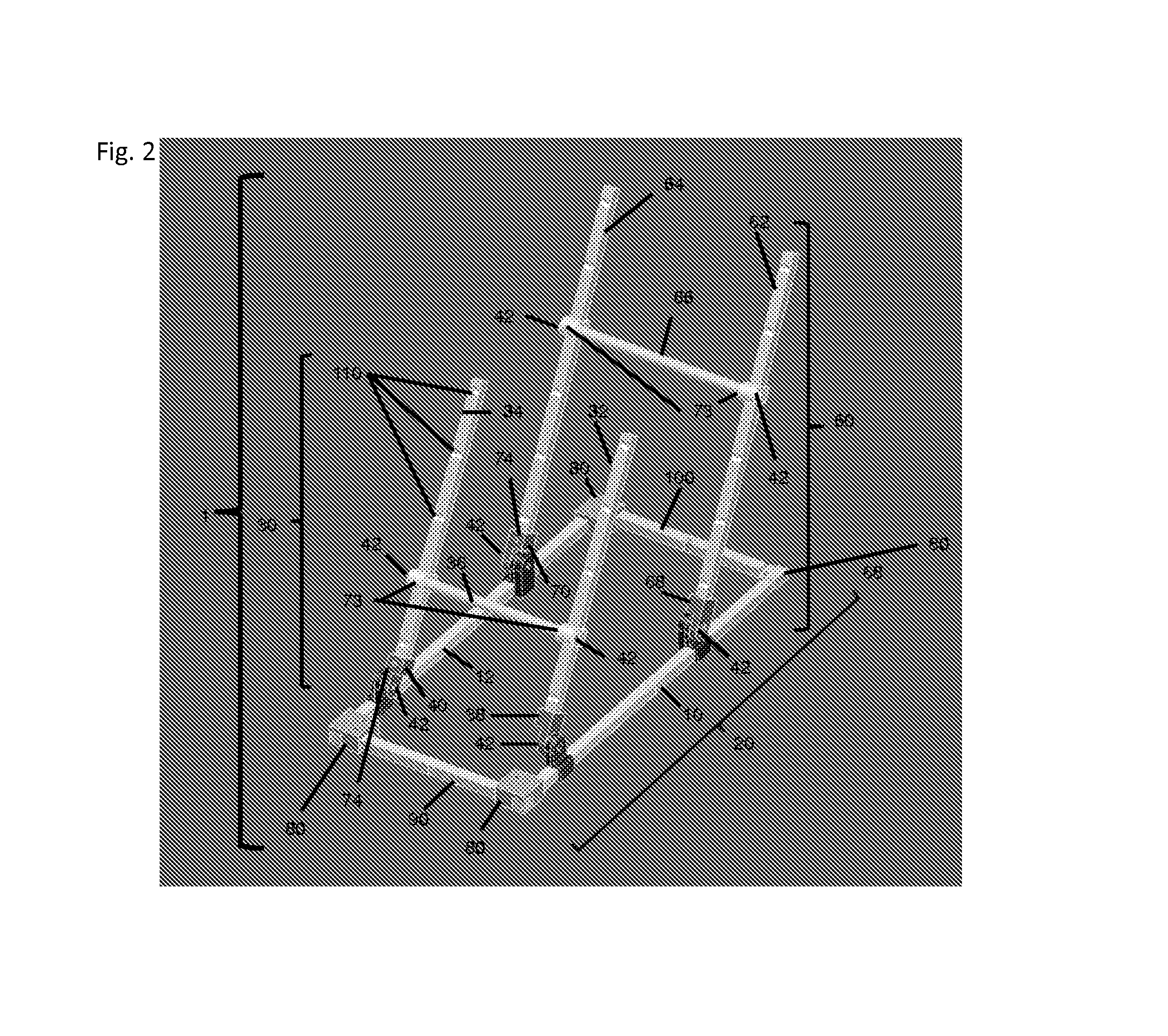Limb positioner
a technology of limb positioner and limb support, which is applied in the field of limb positioner, can solve the problems of limiting the therapeutic value of some patients and medical professionals, the device known in the art for supporting the limb of a patient cannot be easily disassembled or collapsed for transport or storage, and the lack of full access to the limb area, etc., to achieve the effect of easy storage and transportation, increased or decreased distance between the first and second limb support structures along the first and second
- Summary
- Abstract
- Description
- Claims
- Application Information
AI Technical Summary
Benefits of technology
Problems solved by technology
Method used
Image
Examples
example 1
Use of a Positioner Device of the Invention to Repair a Fracture or Other Bone or Tissue Defect
[0110]A positioner device of the invention can be used to provide fracture support, e.g., for a subarticular fracture, in conjunction with conventional fixation. The positioner allows for the extremity to be placed at different angles and heights creating an optimal workspace for fixation. The positioner allows for proper alignment of a fracture prior to fixation. The positioner also allows for greater access to a patient's extremity during fixation (e.g., the positioner does not obstruct the physician's access to the extremity during bone or fracture repair procedures).
example 2
Use of a Positioner of the Invention in Conjunction with Reattachment of Ligaments or Tendons
[0111]A positioner of the invention can be used to provide support and proper positioning of the limb of a patient during surgery to reattach a torn ligament or tendon. The positioner can be used to adjust the height of the patient's limb to provide easy access for the surgeon to the area in need of attention. The positioner can also be used to place the limb in a comfortable position for the patient.
example 3
Use of a Positioner of the Invention for Anterior Cruciate Ligament (ACL) Reconstruction
[0112]A positioner of the present invention can be used to position and support a patient's leg so that the patient's knee is easily accessible to the surgeon during surgery on, or replacement of, the ACL following a tear.
PUM
 Login to View More
Login to View More Abstract
Description
Claims
Application Information
 Login to View More
Login to View More - R&D
- Intellectual Property
- Life Sciences
- Materials
- Tech Scout
- Unparalleled Data Quality
- Higher Quality Content
- 60% Fewer Hallucinations
Browse by: Latest US Patents, China's latest patents, Technical Efficacy Thesaurus, Application Domain, Technology Topic, Popular Technical Reports.
© 2025 PatSnap. All rights reserved.Legal|Privacy policy|Modern Slavery Act Transparency Statement|Sitemap|About US| Contact US: help@patsnap.com



